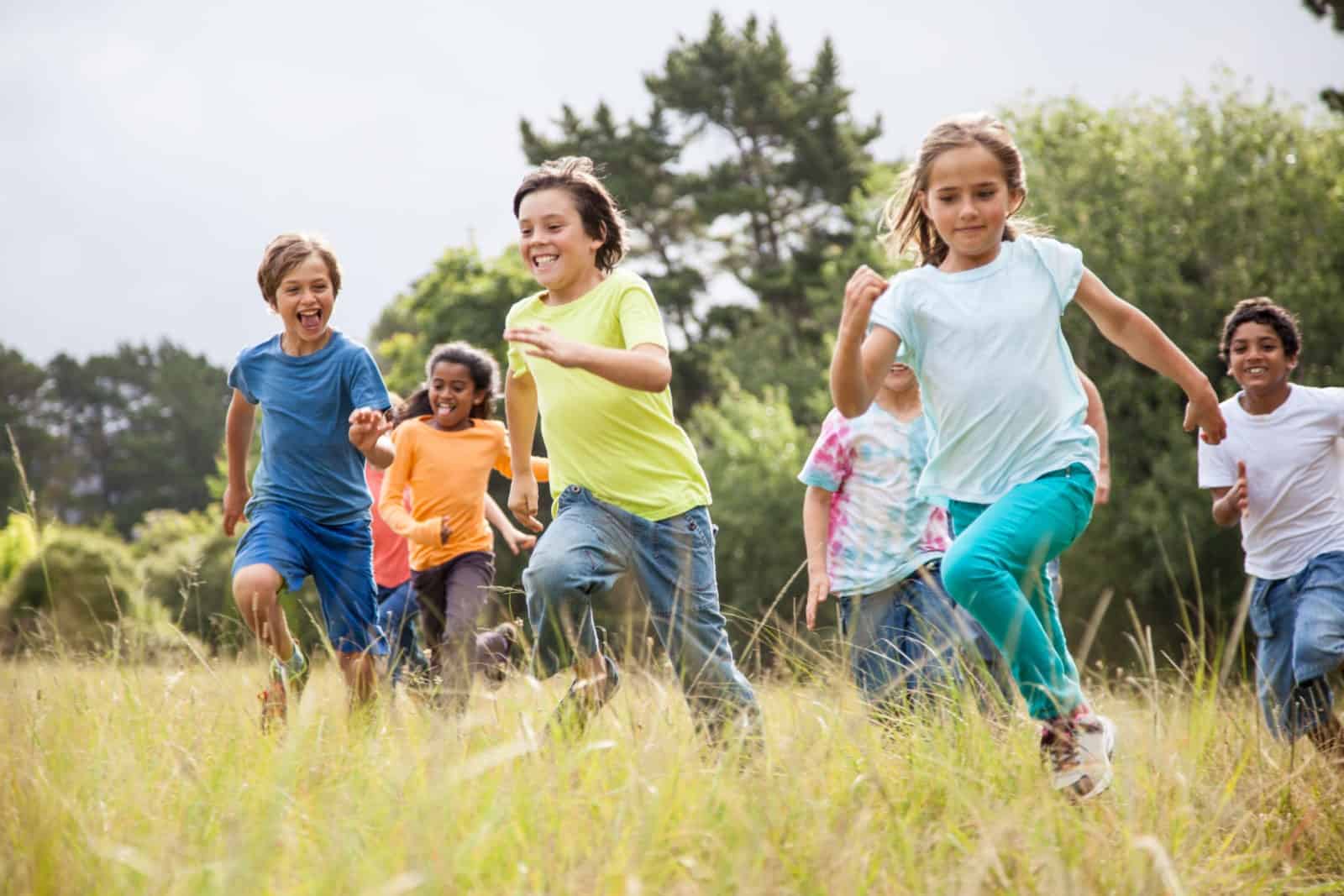Children love running, jumping, and climbing! These are not only fun but vital to their physical development under the watchful eye of parents and nannies. Physical activities that use large body movements are considered gross motor skills. Gross motor skills are necessary for children to develop physical coordination, cognitive development, and emotional regulation. These are essential skills that help children build long-term health. Many of today’s children spend most of their day indoors watching a screen or sitting at a desk. These activities can limit gross motor skill development. Parents, nannies and caregivers should make a focused effort to ensure that children are experiencing enough of these critical movements.
The CDC recommends that children get a minimum of sixty minutes of physical activity per day.
Currently, only 1 in 3 children gets the recommended physical activity every day. Children need to participate in a gross motor activity to develop neural pathways in the brain. These neural pathways affect long-term bone density and coordination in the body (2). Gross motor activity also releases endorphins which have been shown to help the development of emotional regulation skills and improve mood.
As caregivers, it is our responsibility to make sure that children are having their needs met. At least an hour a day of gross motor activity is needed to ensure optimal physical and cognitive development. This activity does not have to happen in one chunk of time. It can be divided up throughout the day – perhaps two thirty-minute activity breaks, or ten minutes at a time of concentrated movement. There are ways to fit this into the daily schedule for all ages.
Allow newborns to have free movement of their arms and legs for a few minutes at a time. Make sure they also have time on their stomachs and encourage them to move. As they get older and begin to crawl and cruise, games can be introduced. Get the child to chase an adult or roll a ball gently towards them. A ball or a desired object, such as a favorite stuffed animal, or brightly colored board book, can also be placed just out of reach for a newly mobile child and rolled farther for one that is cruising along.
Older children usually need a little more room to move. Even when it is raining, hot, or cold, children should spend at least thirty minutes outdoors. It is safe for properly attired children to go outside for twenty minutes at a time in temperatures as low as a 13-degree wind chill and as high as a heat index of 100 degrees (3). Caregivers should be alert to signs that a child is too cold or overheating.
It is essential for adults to join in the activities with the children.
Encourage toddlers and older children to run as fast as they can. Provide obstacles for them to climb on and over, and balls to throw, catch, and chase after. This keeps the children more enthusiastic in their participation in the activity. Studies have also shown that witnessing adults participating in physical activities with children increases a child’s confidence and increases the amount of gross motor activity they engage in as adults (4).
There are extreme temperature and weather days, and, honestly, days when we adults just can’t make ourselves be as physically active as we should. Setting up indoor activities can be an alternative to outdoor games and exercise. Without enough exercise, children tend to act out and may not realize why they are feeling or behaving in a different way. One idea for indoor play is clearing a space or hallway. Use this space to give stop and go commands and instruct children to take giant steps, hops, or run if space allows. Painter’s tape can be used to create a hopscotch board or a maze. Yarn can make a fun obstacle course for children to wade through. Using softballs or aluminum foil balls, children can play throw and catch. Targets can be made using painter’s tape, a wastebasket, or a pile of pillows. Preschool and elementary-aged children enjoy Simon Says or playing with a blown-up balloon. Speaking of balloons, a paper plate makes a great “tennis racket” for indoor play (5).
Children want to run, jump and move. Keeping their health and development in mind, caretakers should encourage this play and find opportunities to allow and promote gross motor skills development. Reducing screen time means handling sad faces and temper tantrums, but it is important to keep in mind a child’s long-term health. Another benefit of these activities is that exercise helps children with self-regulation and managing their overall mood throughout the day.
To learn more, an Understanding Children course is available with enrollment in the Basic Childcare program.
- 2008 Physical Activity Guidelines for Americans: Be Active, Healthy, and Happy! U.S. Dept. of Health and Human Services, 2008.
- Bass, S., et al. “Exercise Before Puberty May Confer Residual Benefits in Bone Density in Adulthood: Studies in Active Prepubertal and Retired Female Gymnasts.” Journal of Bone and Mineral Research, vol. 13, no. 3, Jan. 1998, pp. 500–507. Wiley Online Library, doi:10.1359/jbmr.1998.13.3.500.“
- How Cold Is Too Cold for Kids to Play Outside.” A Healthier Michigan, 21 Dec. 2016, www.ahealthiermichigan.org/2014/01/28/how-cold-is-too-cold-for-kids-to-play-outside/.
- HHS Office, and Council on Sports. “Facts & Statistics.” HHS.gov, US Department of Health and Human Services, 26 Jan. 2017, www.hhs.gov/fitness/resource-center/facts-and-statistics/index.html.
- G, Anna, et al. “Indoor Gross Motor Activities for Preschool and Kindergarten.” The Measured Mom, 6 July 2018, www.themeasuredmom.com/indoor-gross-motor-activities/.
- Hnatiuk, Jill, and Kylie Hesketh. “What Is Physical Activity in Early Childhood, and Is It Really That Important?” The Conversation, The Conversation, 30 Sept. 2018, theconversation.com/what-is-physical-activity-in-early-childhood-and-is-it-really-that-important-63403.


Recent Comments